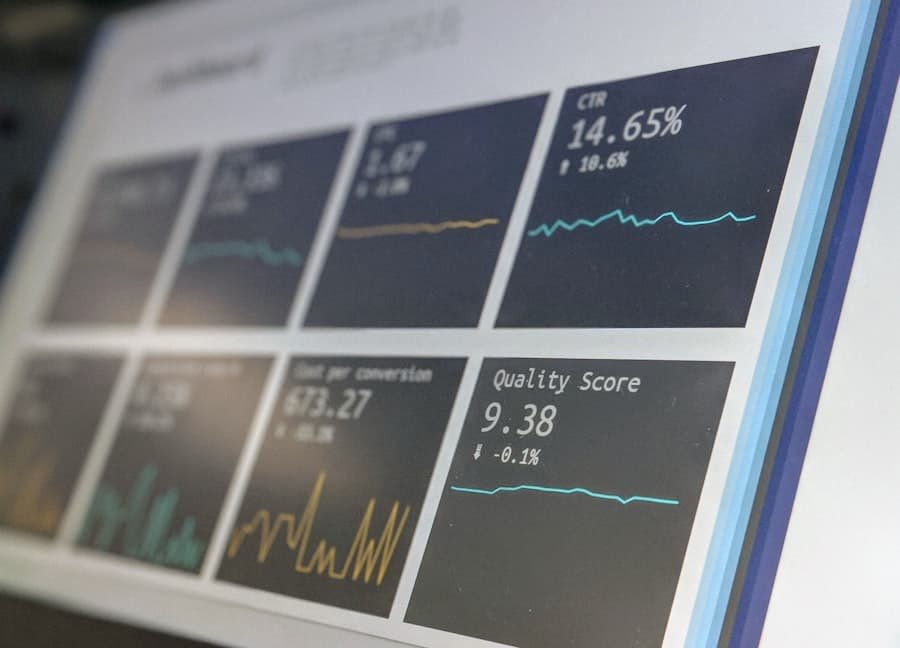In the rapidly evolving landscape of supply chain management, the concept of demand sensing has emerged as a pivotal strategy for businesses seeking to enhance their operational efficiency. Demand sensing refers to the ability to detect and respond to changes in customer demand in real-time, allowing organisations to adjust their inventory and production levels accordingly. The integration of artificial intelligence (AI) into this process has revolutionised how companies approach demand forecasting, enabling them to leverage vast amounts of data to make informed decisions.
AI-powered demand sensing not only enhances the accuracy of forecasts but also provides businesses with the agility needed to navigate the complexities of modern markets. The significance of AI in demand sensing cannot be overstated. Traditional forecasting methods often rely on historical data and static models, which can lead to inaccuracies and inefficiencies.
In contrast, AI algorithms can analyse real-time data from various sources, including sales transactions, social media trends, and market conditions, to identify patterns and predict future demand with remarkable precision. This shift towards AI-driven methodologies is not merely a trend; it represents a fundamental change in how businesses operate, allowing them to become more responsive and customer-centric.
Summary
- AI-powered demand sensing uses advanced technology to accurately predict consumer demand
- Artificial intelligence plays a crucial role in analysing large volumes of data and identifying patterns in demand
- Businesses can benefit from AI-powered demand sensing through improved inventory management and reduced stockouts
- AI-powered demand sensing enhances forecasting accuracy by considering various factors and external influences
- Implementing AI-powered demand sensing in supply chain management requires investment in technology and employee training
Understanding the Role of Artificial Intelligence in Demand Sensing
Artificial intelligence plays a crucial role in demand sensing by enabling organisations to process and analyse large datasets that would be unmanageable through conventional methods. Machine learning algorithms, a subset of AI, are particularly effective in identifying complex patterns within data. These algorithms can learn from historical sales data, customer behaviour, and external factors such as economic indicators or seasonal trends.
By continuously refining their predictions based on new data inputs, AI systems can provide businesses with insights that are both timely and relevant. Moreover, AI enhances the capability of demand sensing by integrating various data sources into a cohesive framework. For instance, businesses can combine point-of-sale data with social media sentiment analysis and weather forecasts to gain a comprehensive view of potential demand fluctuations.
This holistic approach allows companies to anticipate changes in consumer behaviour more accurately than ever before. As a result, organisations can optimise their inventory levels, reduce stockouts, and minimise excess inventory, ultimately leading to improved customer satisfaction and reduced operational costs.
The Benefits of AI-Powered Demand Sensing for Businesses

The advantages of implementing AI-powered demand sensing are manifold and can significantly impact a company’s bottom line. One of the most notable benefits is the enhancement of forecasting accuracy. Traditional methods often struggle to account for sudden market shifts or consumer preferences, leading to overstocking or stockouts.
In contrast, AI-driven systems can adapt quickly to changing conditions, providing more reliable forecasts that align closely with actual demand. Additionally, AI-powered demand sensing facilitates better inventory management. By accurately predicting demand, businesses can optimise their stock levels, ensuring that they have the right products available at the right time.
This not only reduces carrying costs but also minimises waste associated with unsold inventory. Furthermore, improved inventory management contributes to enhanced cash flow, as companies can allocate resources more effectively and invest in growth opportunities rather than tying up capital in excess stock.
How AI-Powered Demand Sensing Improves Forecasting Accuracy
The accuracy of demand forecasts is critical for effective supply chain management, and AI-powered demand sensing significantly enhances this aspect through advanced analytical techniques. Traditional forecasting methods often rely on simplistic models that may not capture the nuances of consumer behaviour or market dynamics. In contrast, AI algorithms utilise sophisticated statistical techniques and machine learning models that can process vast amounts of data from diverse sources.
For example, AI systems can incorporate real-time sales data alongside external factors such as economic trends or competitor activities. By analysing these variables simultaneously, AI can identify correlations that may not be apparent through traditional methods. This capability allows businesses to generate forecasts that are not only more accurate but also more responsive to real-time changes in the market environment.
As a result, companies can make proactive decisions rather than reactive ones, positioning themselves ahead of competitors who may still rely on outdated forecasting techniques.
Implementing AI-Powered Demand Sensing in Supply Chain Management
The implementation of AI-powered demand sensing within supply chain management requires a strategic approach that encompasses technology adoption, data integration, and organisational change. First and foremost, businesses must invest in the necessary technology infrastructure to support AI applications. This includes robust data analytics platforms capable of processing large datasets and machine learning tools that can generate predictive insights.
Data integration is another critical component of successful implementation. Companies must ensure that they are collecting data from various sources—such as sales channels, customer feedback mechanisms, and market research—and consolidating it into a unified system. This holistic view of data enables AI algorithms to function effectively and produce accurate forecasts.
Additionally, organisations should foster a culture of collaboration between departments such as sales, marketing, and supply chain management to ensure that insights generated by AI are effectively utilised across the business.
Overcoming Challenges in Adopting AI-Powered Demand Sensing

While the benefits of AI-powered demand sensing are clear, organisations may encounter several challenges during its adoption. One significant hurdle is the quality and availability of data. For AI algorithms to function optimally, they require high-quality data that is both accurate and comprehensive.
Many businesses struggle with data silos or inconsistent data formats, which can hinder the effectiveness of AI applications. Another challenge lies in the need for skilled personnel who can manage and interpret the outputs generated by AI systems. The integration of advanced technologies often necessitates a shift in workforce capabilities, requiring training and development initiatives to equip employees with the necessary skills.
Furthermore, there may be resistance to change within organisations as employees adapt to new processes and technologies. Addressing these challenges requires strong leadership and a commitment to fostering an innovative culture that embraces technological advancements.
Real-life Examples of Successful AI-Powered Demand Sensing Implementation
Several companies have successfully implemented AI-powered demand sensing strategies, showcasing the transformative potential of this technology. For instance, Unilever has leveraged AI algorithms to enhance its demand forecasting capabilities significantly. By integrating real-time sales data with external factors such as weather patterns and social media trends, Unilever has improved its forecasting accuracy by over 20%.
This enhancement has allowed the company to optimise its inventory levels across various product lines, reducing waste and improving customer satisfaction. Another notable example is Walmart, which has invested heavily in AI-driven analytics to refine its supply chain operations. By utilising machine learning models that analyse historical sales data alongside current market trends, Walmart has been able to predict demand fluctuations with remarkable precision.
This capability has enabled the retail giant to streamline its inventory management processes and ensure that products are available when customers need them most.
The Future of AI-Powered Demand Sensing and Its Impact on Business Operations
Looking ahead, the future of AI-powered demand sensing appears promising as advancements in technology continue to evolve. The increasing availability of big data and improvements in machine learning algorithms will further enhance the capabilities of demand sensing systems. As businesses become more adept at harnessing these technologies, we can expect even greater accuracy in forecasting and more agile supply chain operations.
Moreover, the integration of AI with other emerging technologies such as the Internet of Things (IoT) will create new opportunities for real-time data collection and analysis. For instance, IoT devices can provide valuable insights into consumer behaviour by tracking purchasing patterns or monitoring product usage in real-time. This wealth of information will enable businesses to refine their demand sensing strategies further and respond proactively to market changes.
In conclusion, as organisations continue to embrace AI-powered demand sensing, they will likely experience significant improvements in operational efficiency and customer satisfaction. The ability to anticipate demand fluctuations accurately will empower businesses to make informed decisions that drive growth and competitiveness in an increasingly dynamic marketplace.
AI-Powered Demand Sensing is a crucial tool for businesses looking to stay ahead in today’s competitive market. By harnessing the power of artificial intelligence, companies can accurately predict consumer demand and adjust their supply chain accordingly. This technology has revolutionised the way businesses operate, allowing them to make informed decisions based on real-time data. For those looking to enhance their career prospects, learning Arabic could be a valuable skill to acquire. According to a recent article on businesscasestudies.co.uk, being able to speak Arabic can open up new opportunities in a variety of industries, making you a more attractive candidate to potential employers.
FAQs
What is AI-Powered Demand Sensing?
AI-Powered Demand Sensing is a technology that uses artificial intelligence (AI) to analyze and predict consumer demand for products. It helps businesses to better understand and anticipate customer needs, leading to more accurate demand forecasting and inventory management.
How does AI-Powered Demand Sensing work?
AI-Powered Demand Sensing works by collecting and analyzing large amounts of data, such as sales history, market trends, and external factors like weather and events. The AI algorithms then use this data to identify patterns and make predictions about future demand for products.
What are the benefits of AI-Powered Demand Sensing?
The benefits of AI-Powered Demand Sensing include improved accuracy in demand forecasting, reduced inventory costs, better customer satisfaction through improved product availability, and the ability to respond quickly to changes in demand.
How is AI-Powered Demand Sensing different from traditional demand forecasting methods?
AI-Powered Demand Sensing differs from traditional demand forecasting methods in its ability to handle large and complex datasets, identify non-linear patterns, and adapt to changing market conditions in real-time. Traditional methods often rely on historical data and may not be as responsive to dynamic changes in demand.
What industries can benefit from AI-Powered Demand Sensing?
AI-Powered Demand Sensing can benefit a wide range of industries, including retail, consumer goods, manufacturing, and logistics. Any industry that relies on accurate demand forecasting and inventory management can benefit from the use of AI-Powered Demand Sensing technology.
